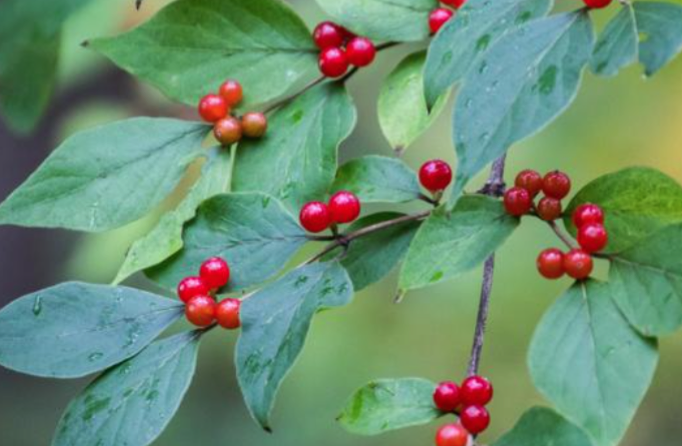Eradicate bush honeysuckle on your own property, since it’s very dangerous to the environment. Honeysuckle secretes slow-acting poisons that reduce the vigor of trees above them and prevent wildflower seedlings or other desirable plants from growing under them.
It destroys the soil for native plants, prevents the regrowth of other plants and trees, and can cause soil erosion.
Songbirds can starve from eating bush honeysuckle berries. Even one overlooked plant can reseed an entire neighborhood. So educate and organize your neighbors to join the effort.
To see more of what bush honeysuckle looks like and learn more about why it is so destructive to the environment, click on this link:http://nature.mdc.mo.gov/discover-nature/field-guide/bush-honeysuckles
The beautiful Bradford Pear tree has gone rogue. It has cross-pollinated with other Callery pears. It has become feral and is as much of an invasive pest as Bush Honeysuckle.
Viruses, Phytoplasmas, Insects and Fungal Infections. For perennials showing signs of disease last year, cull sick plants before growing season starts. Echinaceas have been hit particularly hard recently by both viral and phytoplasma problems. Aster yellows (a common phytoplasma) and eriophyid mites both cause malformed flower petals and cones. Replace sick clumps with plants not in the aster family, perhaps phlox or veronicas, so new plants aren’t infected by residual leaf litter or insect reservoirs. Viral infections have been quite common for hostas and cannas. Discolored streaks in leaves and flowers can indicate viral infection. Good sanitation practices are essential for a healthy garden. No cure exists for aster yellows or most viral diseases, so dig out and destroy affected plants. Soak tools in a bleach solution after use, before drying and oiling surfaces to prevent the spread of unpleasant agents.
Check for Reversions. Variegated shrubs and perennials may undergo reversion, or “sporting,” and experience a genetic change in vigor and appearance. Roses, Japanese maples, citrus trees, apple trees, camellias and variegated shrubs are most commonly affected. Prune branches with undesirable traits. If patches of solid green leaves occur in the middle of your golden-variegated shrub, they’ll typically grow faster because they have more chloroplasts generating food, the bush will eventually not be variegated anymore.
“Astor Yellows” disease has infected this echinacea plant.



You must be logged in to post a comment.